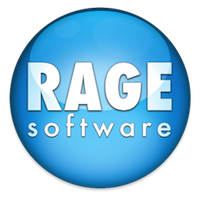6 EverWeb Shortcuts You Need to Know About!
Thursday, October 28th, 2021
Time is a precious commodity and even more so in this day and age where we all seemingly have to work harder and faster! Working smarter, though, will help claw some of that precious time back for you and EverWeb has a few great shortcuts that will save you both time and effort.
Widget Asset List Selection
One of the major highlights of the recently released EverWeb 3.5.1 is the inclusion of the ability to change the settings of multiple items in a Widget’s Assets List at the same time. This is an incredible boon for when you suddenly realise, for example, that you need to change all of the Minimum Width values of your Embedded Objects in the FlexBox widget. Prior to EverWeb 3.5.1, you would have to select each Embedded Object, change the value, in my case Minimum Width, then move on to the next Embedded Object until you were finished. Now all you need to do is to highlight all of the objects in the Embedded Objects list, then change the value just once. All the selected Embedded Objects will be updated immediately.
You can select whichever objects you want to update all at the same time. For example, if you have five objects in the list and want to select all of them, you would select the first object in the list, then Shift+Click the on last object in the list. If you wanted to select only the first, third and fifth objects, you would again click on the first object then hold down the Command key and click on the third and fifth objects. In the second example, you can click on the first, third and fifth objects in any order you like, as long as you keep the Command key down whilst doing so.
You be aware that widget Asset Lists often go by a variety of different names, depending on their function in the widget. As you can see above, the FlexBox widget has an Embedded Objects list, the Contact Form Advanced widget uses a Form Controls list and so on…
Updating Multiple Widgets of the Same Type
EverWeb also allows you to update multiple widgets of the same type, all at one time, if they are on the same page. This is especially useful if, for example, you are using the PayPal widget and want to change the default Buy Now button to a button image of your own. You used to have to update each widget one by one, but since EverWeb 3.4 you can now do this all at one time. Just select all of the PayPal widgets on the page, then click on the Widget Settings button in the Inspector Window. Now check the the ‘Use Custom PayPal Button Image’ Checkbox and select your Custom Image file. All of the selected PayPal widgets will be automatically updated!
One thing to note when using this feature is that once you have finished updating all of your PayPal widgets, de-select the widgets immediately. This will stop you inadvertently updating all the selected widgets when you may just want to update one.
Replace Asset
Replace Asset is another boon for those of you who need to have placeholder images in your page. For example, you want to have an image on your home page that is also used on other pages of your site. You may want to change the image every month e.g. if you are in retail and need to update your website for seasonality. Since EverWeb 3.4, you can now easily do with a one click operation. Start by going to the Assets Tab and then secondary click on the image you want to replace (e.g. last month’s cover) with an updated image (this month’s cover). From the Submenu, select Replace Asset… and choose the updated image. That’s all you need to do! The new image will replace the old wherever it is used in your site!
Swapping Master and Regular Pages
When developing your site, you may find that you make a page that would be perfect as a Master Page. You can easily copy your page without having to create a new Master Page from scratch, just drag and drop your page in to the Master Page area! It’s that simple. And the great thing is that it works the other way round too, so if you accidentally create a regular page in the Master Page area, just drag and drop it in to the regular page section.
Moving Page Content Quickly and Easily
If you have ever wanted to open up a gap in the middle of your page this tip is for you! You can use a keyboard short cut to move objects either up or down the page without disrupting your page layout. This is really useful when you want to, for example, insert a widget between two TextBox paragraphs. e.g. you may want to insert an Image Slider or YouTube Video widget in to the middle of your page.
to start, go to the place on the page where you want to insert your object. Choose an object in this area of the page that you want to move down the page. Select the object, but hold down the Cmd+Shift keys down at the same time. Keep the keys pressed down and drag the object down the page. You will see that the selected object and everything under it move down the page! When you have the gap you want, release the mouse and keyboard keys.
Note that it’s the selected object and those below it that get moved down. If you have other objects on the same (horizontal) level as the selected object, they will not move down.
Use Secondary (Right) Click
Using a two finger tap on your mouse or trackpad is a great way to access some commonly used EverWeb feature without having to go up to EverWeb’s menu bar. The list of options has also expanded over time which makes this feature even more useful, especially when using the Responsive Row widget which recently added a ‘Remove from Responsive Row’ option so you can easily divorce objects from the Responsive Row so that the object becomes a full width object in the Editor Window. We are also hoping to add some more functionality in EverWeb 3.6 to this submenu, so stay tuned!
All of the above features can be found in EverWeb 3.5.1 and above. If you are using an earlier version of EverWeb you may need to update your copy to be able to access all of these features.

